How Do Car Seats Fit in a 2025 Tesla Model 3?

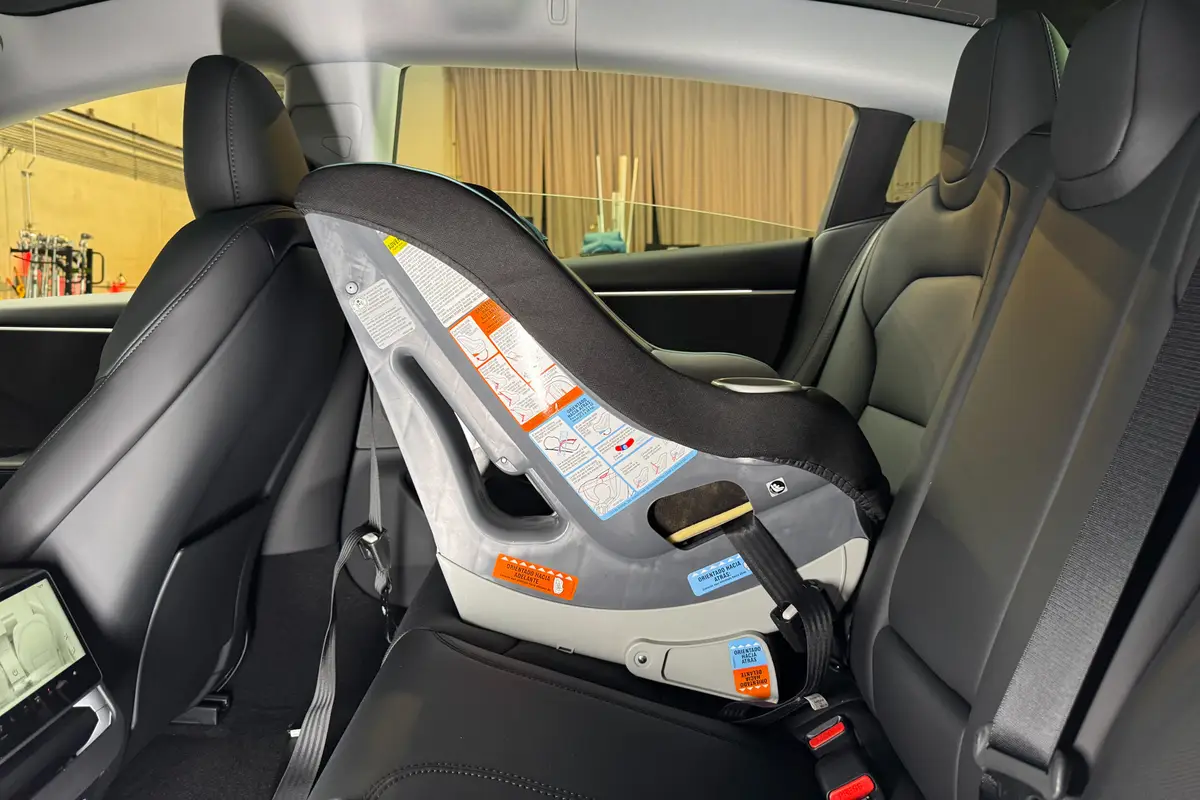
The verdict: Tesla’s smallest car, the all-electric Model 3 sedan, has a much roomier backseat than expected. In our Car Seat Check, the Model 3 performed well and easily fit two car seats thanks to easy-access lower anchors and enough backseat legroom.
Does it fit three car seats? No.
Take a look at how the Latch system and each car seat scored below in our Car Seat Check of the 2025 Tesla Model 3.
Related: Search Car Seat Checks

Latch: Grade A
The two sets of lower anchors are set around an inch into the seat bight, where the back and bottom cushions meet, but they are still easy to access despite this depth. Three top tether anchors sit on the rear shelf; they’re clearly marked.
Infant Seat: Grade A
Connection to the lower anchors was surprisingly easy given that they are not exposed. The infant seat fit well, and our 5-foot-8-inch front passenger had plenty of room in front of the car seat.
Rear-Facing Convertible: Grade A
As with the infant seat, the convertible in rear form was easy to install and fit well.
Forward-Facing Convertible: Grade B
This seat was also easy to install and fit well, but the Model 3’s rear head restraints are fixed, which pushes the car seat off of the seatback when it should fit flush against it. Note that there are different top tether connection instructions, depending on what type of tether strap your car seat uses and where you install the car seat:
- For outboard seats with double-strap top tether straps, route the strap around each side of the head restraint.
- For single tethers, route around the outside of the head restraint.
- For the center seat and with single-strap tether straps, route over the head restraint.
- For double-strap tethers in the middle, route around each side of the head restraint.
Booster: Grade C
The fixed head restraint pushes the booster off of the seatback. Additionally, the Model 3’s buckles sit flush in the seat bight and the booster can easily slide over a buckle, complicating connection.
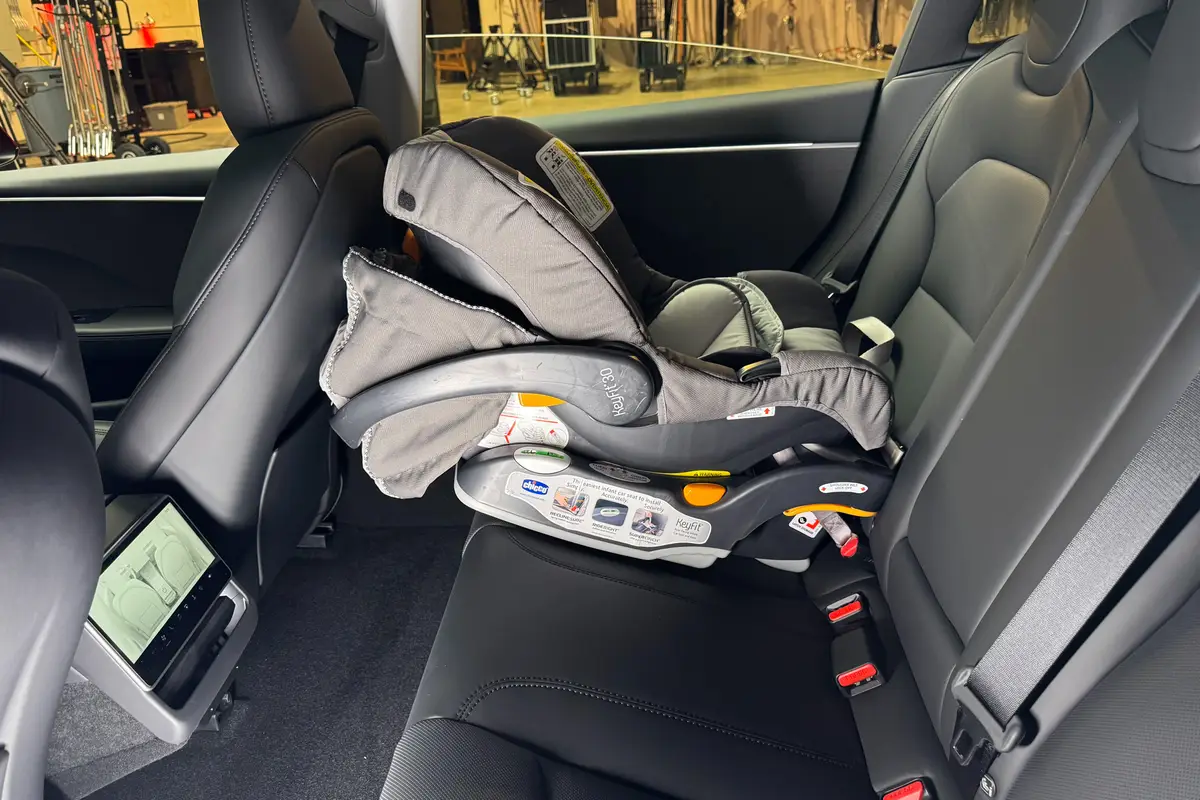
Grading Scale
A: Plenty of room for the car seat and the child; doesn’t impact driver or front-passenger legroom. Easy to find and connect to Latch and tether anchors. No fit issues involving head restraint or seat contouring. Easy access to the third row.
B: One room, fit or connection issue. Some problems accessing the third row when available.
C: Marginal room plus one fit or connection issue. Difficult to access the third row when available.
D: Insufficient room, plus multiple fit or connection issues.
F: Does not fit or is unsafe.
About Cars.com’s Car Seat Checks
Editors Jennifer Geiger and Jennifer Newman are certified child safety seat installation technicians.
For the Car Seat Check, we use a Chicco KeyFit 30 infant-safety seat, a Graco Contender 65 convertible seat and Graco TurboBooster seat. The front seats are adjusted for a 6-foot driver and a shorter passenger. The three child seats are installed in the second row. The booster seat sits behind the driver’s seat, and the infant and convertible seats are installed behind the front passenger seat.
We also install the forward-facing convertible in the second row’s middle seat with the booster and infant seat in the outboard seats to see if three car seats will fit; a child sitting in the booster seat must be able to reach the seat belt buckle. If there’s a third row, we install the booster seat and a forward-facing convertible. Learn more about how we conduct our Car Seat Checks.
Parents should also remember that they can use the Latch system or a seat belt to install a car seat, and that Latch anchors have a weight limit of 65 pounds, including the weight of the child and the weight of the seat itself.
Cars.com’s Editorial department is your source for automotive news and reviews. In line with Cars.com’s long-standing ethics policy, editors and reviewers don’t accept gifts or free trips from automakers. The Editorial department is independent of Cars.com’s advertising, sales and sponsored content departments.
About Cars.com’s Car Seat Checks
Editors Jennifer Geiger and Jennifer Newman are certified child safety seat installation technicians.
For the Car Seat Check, we use a Chicco KeyFit 30 infant-safety seat, a Graco Contender 65 convertible seat and Graco TurboBooster seat. The front seats are adjusted for a 6-foot driver and a shorter passenger. The three child seats are installed in the second row. The booster seat sits behind the driver’s seat, and the infant and convertible seats are installed behind the front passenger seat.
We also install the forward-facing convertible in the second row’s middle seat with the booster and infant seat in the outboard seats to see if three car seats will fit; a child sitting in the booster seat must be able to reach the seat belt buckle. If there’s a third row, we install the booster seat and a forward-facing convertible. Learn more about how we conduct our Car Seat Checks.
Parents should also remember that they can use the Latch system or a seat belt to install a car seat, and that Latch anchors have a weight limit of 65 pounds, including the weight of the child and the weight of the seat itself.
Cars.com’s Editorial department is your source for automotive news and reviews. In line with Cars.com’s long-standing ethics policy, editors and reviewers don’t accept gifts or free trips from automakers. The Editorial department is independent of Cars.com’s advertising, sales and sponsored content departments.

News Editor Jennifer Geiger joined the automotive industry in 2003, much to the delight of her Corvette-obsessed dad. Jennifer is an expert reviewer, certified car-seat technician and mom of three. She wears a lot of hats — many of them while driving a minivan.
Featured stories
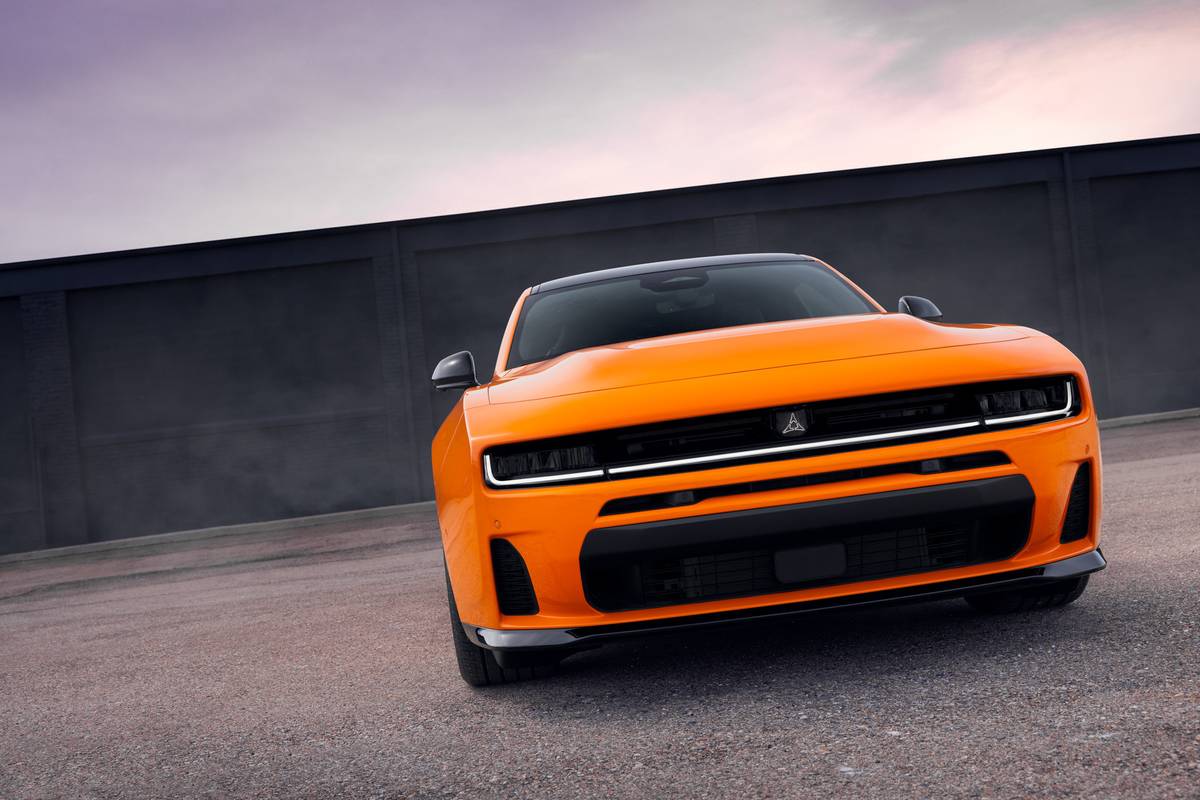
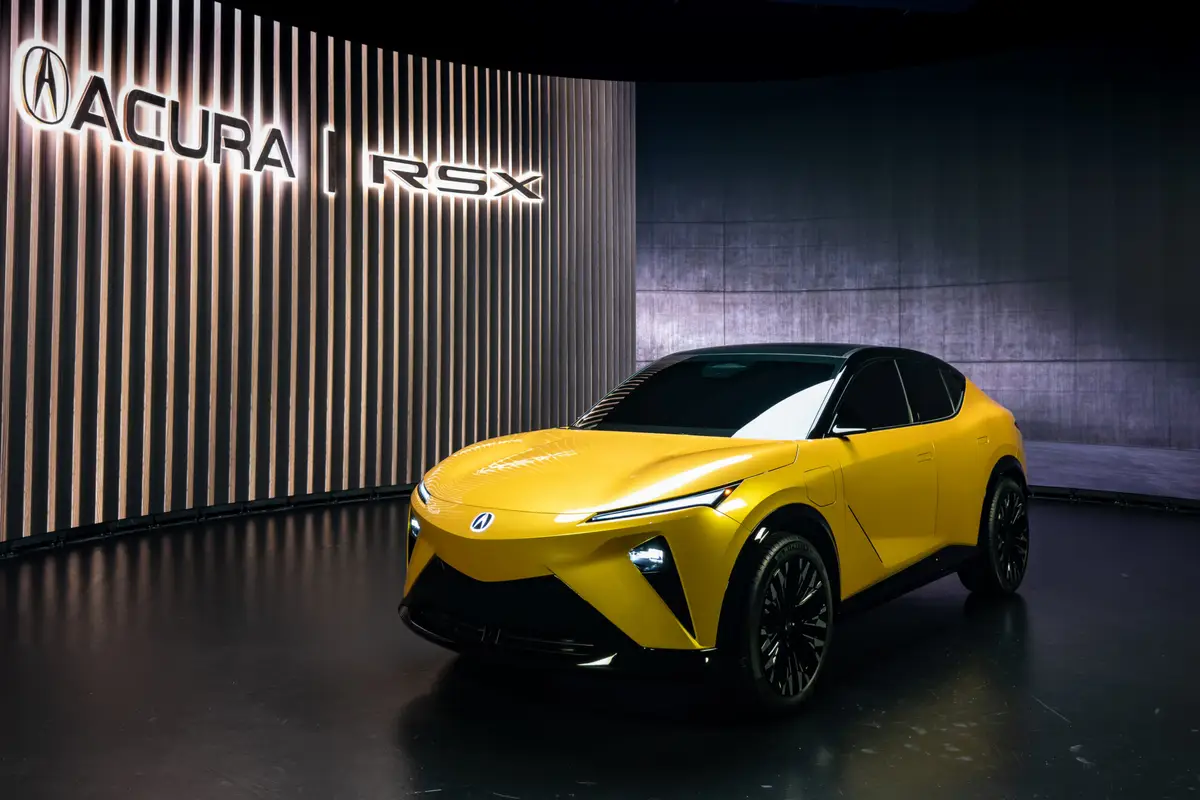
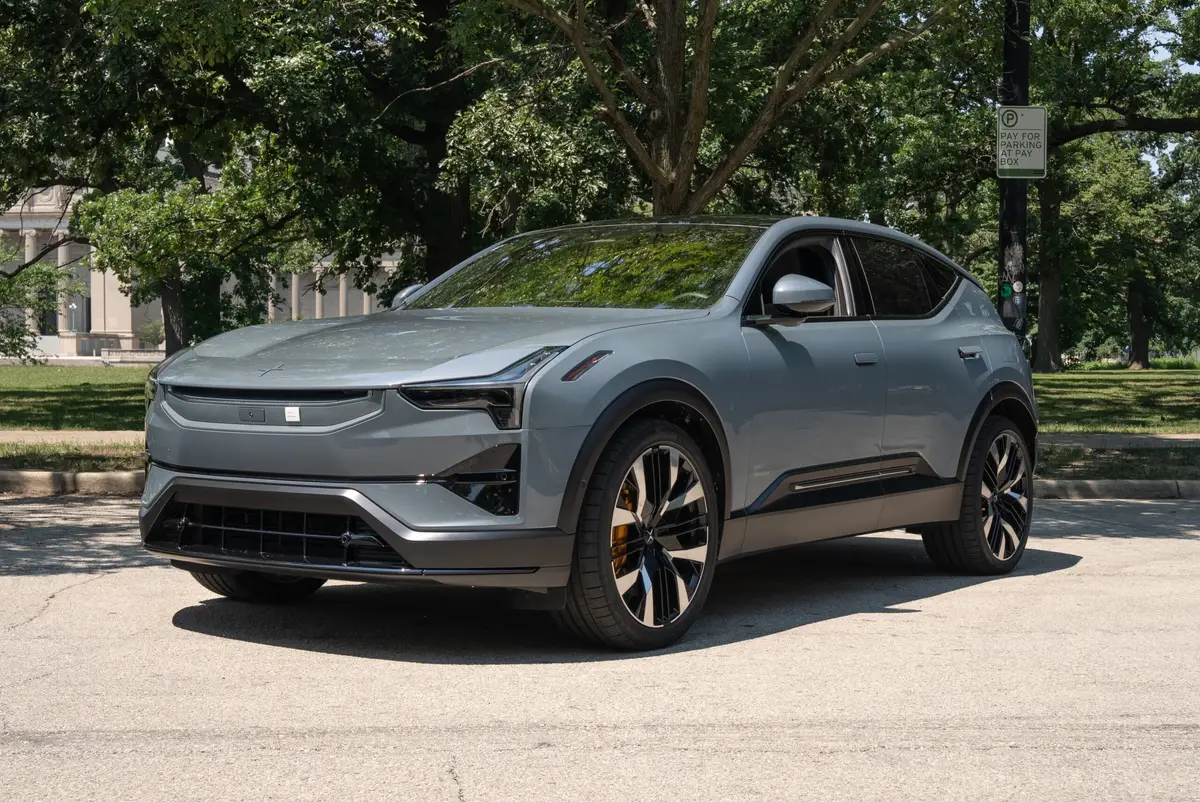
2025 Polestar 3 Review: Understated Electrified Luxury

